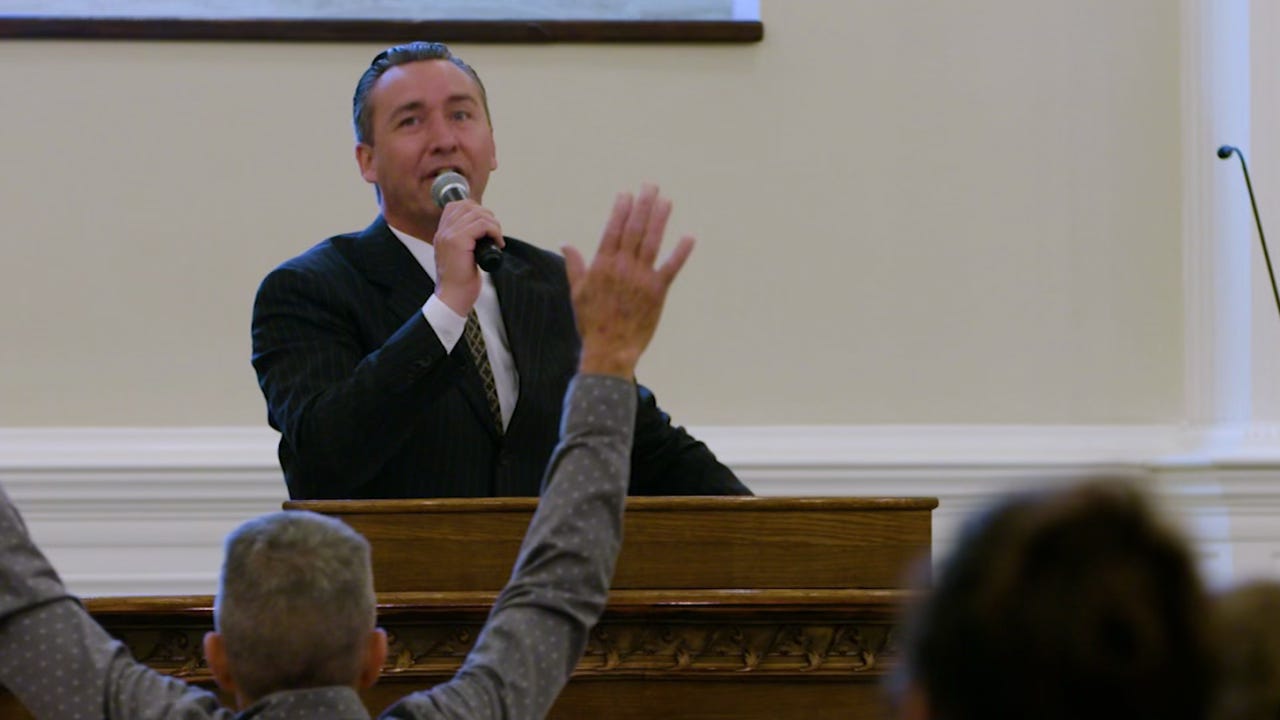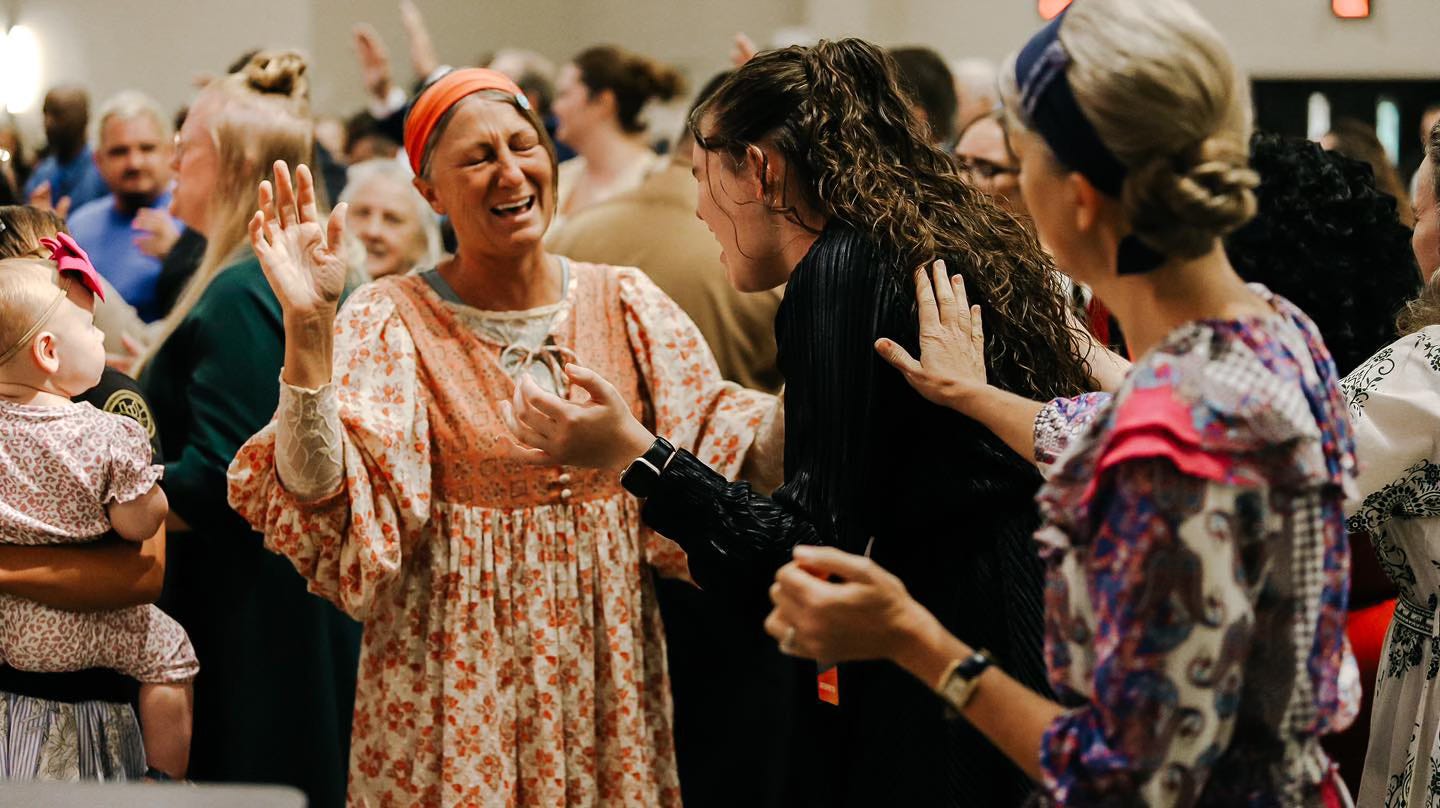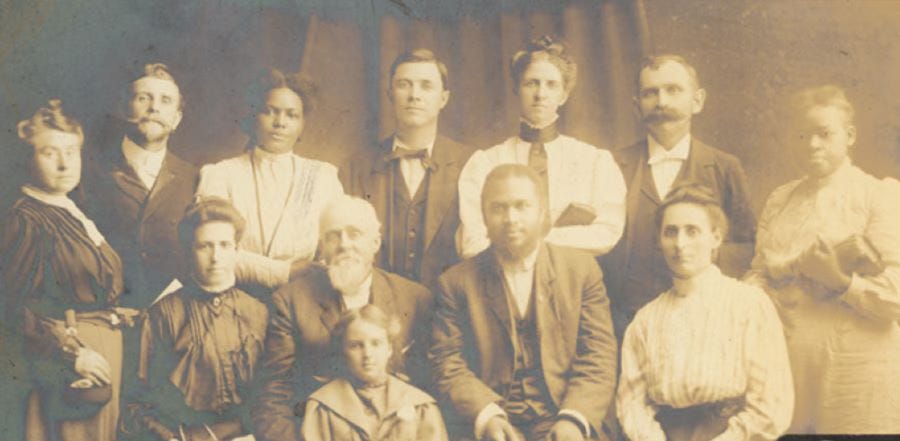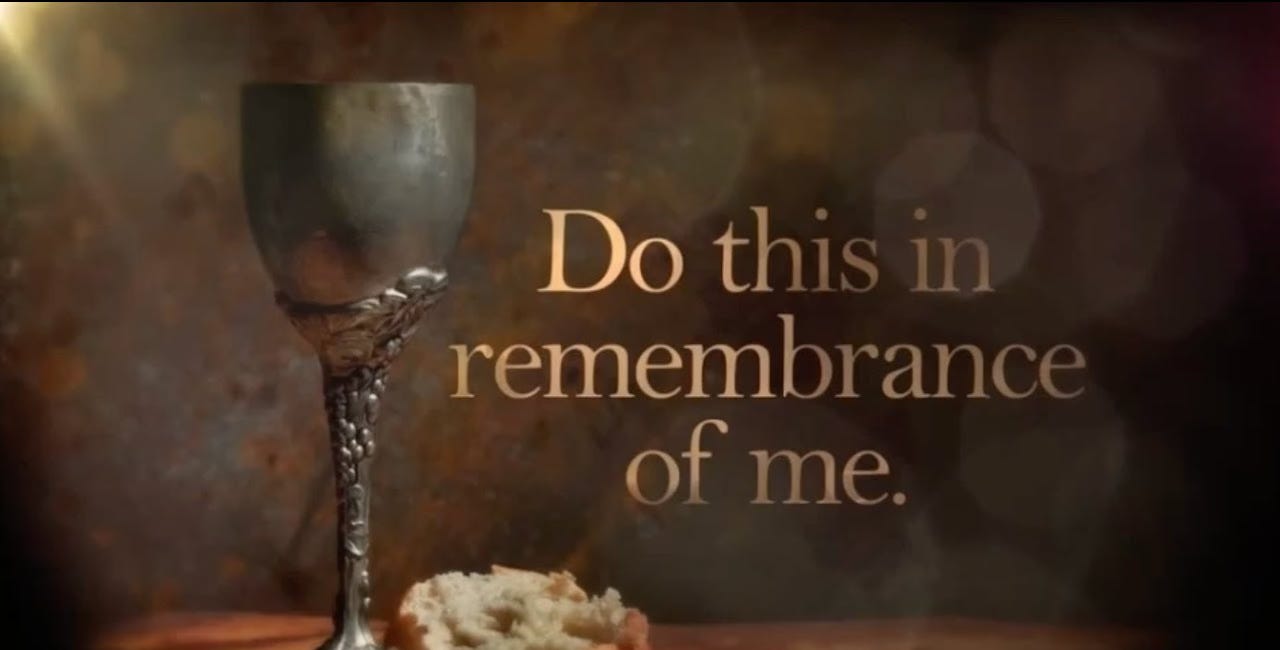Sanctified and Southern: How Pentecostalism Shaped Louisiana Life and Culture
From the spirited choruses echoing through backroad churches to the scent of home-cooked meals after Sunday service, Pentecostalism has long been a defining thread in Louisiana’s spiritual and cultural fabric. Step inside one of these churches on a Sunday morning, and you’ll likely hear the hum of Hammond organs, tambourines shaking in rhythm, and voices lifted not just in song, but in spontaneous praise and prayer. There’s a tangible electricity in the air—an expectation that something divine might happen at any moment.
This isn’t just religion; it’s relationship, rhythm, and ritual passed down through generations. It’s a grandmother shouting hallelujah with tears in her eyes, a teenage boy on his knees at the altar, and a congregation ready to cook, serve, and support each other come Monday morning. Its passionate worship, vibrant traditions, and deeply rooted community life make Pentecostalism one of the most influential religious movements in the state—especially in rural parishes and small towns where the church isn’t just a building, but the beating heart of everyday life.
A Revival Roots Movement with Deep Louisiana Soul
Pentecostalism, as a modern spiritual movement, traces its dramatic emergence to the early 20th century, most notably the Azusa Street Revival in Los Angeles in 1906. That revival ignited a worldwide wave of Spirit-filled worship centered on speaking in tongues, healing, prophecy, and emotional expressions of faith. But while the spark may have been struck in California, it didn’t take long for the fire to reach Louisiana’s bayous, backroads, and parishes.
Here in the Deep South—where faith and culture are often inseparable—Pentecostalism resonated deeply with people who valued heartfelt religion, personal holiness, and supernatural encounters with God. Traveling evangelists and circuit preachers brought the message of Spirit baptism to tent revivals and brush arbor meetings. These events often lasted for days, drawing entire communities out under the stars to experience what many called a move of God.
By the 1930s and 40s, Louisiana became fertile ground for Pentecostal growth, especially within the United Pentecostal Church International (UPCI), which officially formed in 1945. From Lake Charles to Monroe, Alexandria to Baton Rouge, congregations sprang up in rural towns and small cities—many of them planted in converted storefronts, schoolhouses, or living rooms. These were humble beginnings, but the faith was anything but timid.
The unique cultural blend of Louisiana—French, African, Cajun, Creole, and Anglo influences—helped shape the flavor of Pentecostalism here. Services featured fiery preaching and spirited altar calls, but they also reflected the musical, linguistic, and communal rhythms of the region. As the movement grew, so did its impact, with churches becoming central hubs not only for worship but for food, fellowship, education, and social support.
More than just a theology, Pentecostalism became a way of life in Louisiana—fueled by revival, grounded in holiness, and sustained by a deep, often unshakable belief that the Spirit still speaks today.
Women as the Cultural Carriers of Holiness
In Louisiana’s Pentecostal communities, women are far more than quiet supporters of the faith—they are the keepers of tradition, the enforcers of doctrine, the nurturers of next generations, and, in many ways, the cultural backbone of the movement.
Nowhere is this more visible than in the distinctive holiness standards many Pentecostal women uphold. Long uncut hair, modest dresses or skirts, and natural beauty are not simply personal preferences—they are acts of devotion rooted in Scripture and reinforced by generations of church teaching. These choices are worn proudly, not with shame, serving as visible reminders of inward convictions. In rural towns and tight-knit parishes, these outward signs also foster a strong sense of group identity, unity, and sacred separation from the world.
But their role extends far beyond appearance. Women organize prayer groups, teach Sunday school, run women’s ministries, and often serve as the quiet spiritual counselors behind many local revivals and renewals. They are worship leaders, intercessors, and organizers—mobilizing efforts for everything from meal trains for grieving families to mission fundraisers and community outreach.
The influence of Pentecostal women in Louisiana is captured powerfully in “Spirit-Filled Women,” Glenda B. Mitchell’s ethnographic study of UPCI congregations. She notes that these women are not passive recipients of male-led teachings but are active agents who interpret, reinforce, and transmit religious beliefs through stories, testimony, songs, and lifestyle. Their homes often double as training grounds for faith and holiness, where the next generation is taught how to pray, how to fast, how to dress, and how to listen for the voice of God.
In a culture that often equates leadership with visibility, Pentecostal women in Louisiana remind us that true spiritual leadership can also be found in kitchens, classrooms, and quiet conversations after church. They do not simply preserve tradition—they embody it.
Racial Dynamics and Cultural Interweaving
From its earliest days, Pentecostalism carried the seeds of racial unity. At the famed Azusa Street Revival in 1906, Black, white, Latino, and Asian believers worshiped side-by-side—a radical image of unity in a deeply segregated America. That spirit of integration briefly flourished, but it was eventually choked by the racial divides of Jim Crow laws and the societal pressures of the South. Louisiana, shaped by its own complex racial history, was no exception.
As Pentecostalism took root in the Bayou State, churches often split along racial lines—not necessarily out of theological conviction, but because of cultural and legal segregation. Black and white Pentecostals, while sharing nearly identical beliefs, formed separate denominations, congregations, and leadership structures. For decades, this duality shaped the Pentecostal landscape of Louisiana, with parallel church networks growing side by side but rarely crossing paths.
Yet the spiritual DNA of Pentecostalism—its emphasis on shared experience, personal testimony, and the presence of the Holy Spirit—has continued to push against these divides. In many communities, informal collaborations, joint revivals, and inter-church gatherings have become more common. While full institutional integration remains a challenge, there’s growing evidence that believers across racial lines are seeking unity not just in doctrine, but in fellowship.
Culturally, Louisiana Pentecostalism has long reflected the broader diversity of the state. In Black Pentecostal congregations, the music tends to be more gospel-influenced, sermons more call-and-response, and services more celebratory and rhythmic. In Cajun or Creole communities, it’s not unusual to find worship songs infused with French phrases, traditional instruments, or local stylistic flair.
In this way, the faith itself becomes a cultural chameleon—retaining its theological core while expressing itself through the language, music, and customs of the people who practice it. Whether in a small-town white UPCI church or a spirited Black Apostolic congregation, the Pentecostal experience is unmistakable: passionate, Spirit-led, and rooted in a deep hunger for connection with God.
Today, as the state continues to evolve demographically and socially, many Pentecostal churches are reimagining what racial reconciliation can look like—not just in word, but in worship, leadership, and community outreach. The road isn’t without obstacles, but the Pentecostal message of unity through the Holy Spirit offers a powerful foundation on which to build.
Leaders Who Helped Define the Movement
The strength and staying power of Louisiana’s Pentecostal movement can be traced not only to its grassroots fervor, but to the powerful personalities and faithful leaders who helped shape its theology, tone, and cultural reach. From small-town pastors to international evangelists, these figures have influenced how Pentecostalism is practiced, perceived, and passed on across the state and beyond.
The Mangun Family – Apostolic Legacy in Alexandria
At the heart of Louisiana Pentecostalism stands the Mangun family, spiritual royalty within the United Pentecostal Church International (UPCI).
G.A. Mangun, a bold and visionary pastor, transformed a small congregation in Alexandria into a powerhouse of Apostolic influence. Known for his revivalist preaching and burden for prayer, he laid the groundwork for what would become one of the most prominent Pentecostal churches in the nation.
His son, Anthony Mangun, carried that torch with a dynamic blend of old-school Pentecostal fire and modern strategic leadership. He emphasized intercessory prayer, global missions, and local community impact.
Today, Gentry Mangun leads The Pentecostals of Alexandria as the third generation in this spiritual dynasty. His preaching blends tradition with innovation, appealing to both seasoned saints and emerging generations. The church is known for its global outreach, conferences like Because of the Times, and its model of multigenerational ministry.
Jimmy Swaggart – Baton Rouge’s Evangelist to the World
A towering figure in charismatic and Pentecostal circles, Jimmy Swaggart rose to national prominence in the 1980s through televised preaching, gospel music, and camp meetings.
Based in Baton Rouge, his Family Worship Center became the headquarters for Jimmy Swaggart Ministries, whose reach extended across the globe via satellite broadcasts and crusades. Despite public controversies that nearly ended his ministry, Swaggart remains an influential voice, especially among older Pentecostals and those drawn to Spirit-filled gospel music. His theological stance bridges Pentecostal, Assemblies of God, and broader charismatic traditions.
Jesse Duplantis – Humor and Prosperity in Destrehan
Charismatic and outspoken, Jesse Duplantis is one of the more unconventional figures in Louisiana’s Pentecostal-adjacent circles. Based in Destrehan, Duplantis is best known for his prosperity preaching and his ability to blend humor with Scripture in a way that resonates with wide audiences.
His media ministry reaches millions through television, books, and livestreaming, and though he’s sometimes criticized for his flamboyant style (and private jet controversy), his influence in the broader charismatic world is undeniable.
Tommy Tenney – The God Chaser from Pineville
Author and speaker Tommy Tenney helped redefine worship and intimacy with God through his bestselling book The God Chasers. Raised in a Pentecostal family in Pineville, Tenney’s message centers on pursuing God’s presence above all else.
His teachings struck a chord with believers across denominational lines, making him a bridge between traditional Pentecostals and the growing charismatic movement. Though not pastoring a traditional church, his writings and conferences continue to shape worship culture across the state.
Local Pastors, Deep Roots
Beyond the big names are dozens of local pastors whose consistent, faithful ministry has kept Pentecostal churches alive and thriving in small towns and growing suburbs:
Pastor Dan Davis of First Pentecostal Church in Baton Rouge has led his congregation since 2002, emphasizing discipleship, passionate preaching, and a welcoming church environment for families and seekers.
Pastor Paul Trentacoste of The Pentecostals of Mandeville brings energy and approachability to his ministry, focusing on practical teaching and strong church family dynamics.
Pastor Ryan Allmon Jr. of Full Gospel United Pentecostal Church carries on the legacy of his father while embracing modern outreach strategies. Under his leadership, the church has expanded physically and digitally, engaging the next generation through youth ministry, technology, and culturally relevant teaching.
Pastor Tony Spell of Life Tabernacle Church in Central, has gained national attention for his outspoken defense of religious liberty during the COVID-19 pandemic, particularly for defying statewide shutdown orders in 2020. His actions stirred both praise and controversy, but among many in the Pentecostal community, he is seen as a bold defender of faith and constitutional rights. Life Tabernacle remains an active, evangelism-focused congregation, known for its outreach to the poor, including running bus ministries and community events for children and families.
These leaders represent a broad spectrum of Pentecostal identity—from traditional Apostolic pastors to modern media personalities. What unites them is their shared passion for revival, the authority of Scripture, and the belief that the Holy Spirit is still actively moving in Louisiana today.
Faith in a Changing World
While Pentecostalism in Louisiana remains deeply rooted in tradition, it is not untouched by the changing tides of the modern world. As culture evolves—fueled by technology, shifting values, and generational divides—Pentecostal churches across the state are finding themselves at a crossroads: how to honor the past without losing the future.
Many churches are actively navigating this tension. For some congregations, the answer has been to double down on the holiness standards and doctrinal convictions that have defined Pentecostalism for over a century. These churches see themselves as a bulwark against moral compromise, offering a spiritual safe haven amid cultural confusion. They hold firm to traditional gender roles, lifestyle expectations, and distinct separations from secular entertainment, fashion, and ideologies.
Others, while holding to core theological beliefs, have embraced more flexible models of engagement. These congregations livestream their services, post sermon clips on TikTok and YouTube, and create welcoming environments for newcomers who may not dress or act according to long-established standards. The emphasis in these churches is less on appearance and more on relationship—relationship with Christ, with community, and with Scripture.
Younger Pentecostals are also reshaping the movement. Many of them are deeply committed to the Spirit-filled life but are asking hard questions: How do we love our neighbors in a divided culture? What does holiness look like in a digital age? Can we be both faithful and relevant? These questions are prompting churches to re-examine not their doctrine, but their methods. Youth ministries, creative arts teams, worship collectives, and social media outreach are becoming vital tools in the mission to reach the next generation.
At the same time, Louisiana’s Pentecostal churches continue to play a vital role in disaster relief, addiction recovery, and community building—especially in the wake of hurricanes, economic hardship, and the cultural challenges facing rural families. They provide mentorship, belonging, and moral clarity in a time when many feel disconnected from deeper purpose.
In all of this, one thing remains constant: the conviction that the Holy Spirit is not a relic of Pentecost past, but a living, active force that guides, convicts, heals, and empowers today. Whether in traditional sanctuaries or modern media rooms, the cry remains the same—“God, send revival.”
A Lasting Legacy of Spirit and Culture
Louisiana is often celebrated for its food, music, festivals, and folklore—but just beneath the surface of every crawfish boil and second line lies a deeper spiritual heritage that shapes the soul of the state. Pentecostalism, with its fiery sermons, Spirit-led worship, and deeply rooted sense of community, has become more than just a religious movement—it is a living thread in the cultural tapestry of Louisiana.
In small towns and city neighborhoods alike, Pentecostal churches remain places of refuge, identity, and transformation. They are the buildings where babies are dedicated, couples are wed, teenagers are baptized, and elders are honored in packed-out homegoing services. These churches are often the first to open their doors after hurricanes, the first to feed the hungry, and the last to leave a hurting neighborhood.
The legacy isn’t just spiritual—it’s cultural. Pentecostalism has influenced Louisiana’s musical sound, its emphasis on storytelling and testimony, and even its sense of resilience in the face of hardship. In a state that knows both joy and suffering, Pentecostal churches have taught generations how to shout in celebration and weep in repentance—often in the same service.
And while some might view the movement as old-fashioned or out of step with modern trends, its staying power tells another story. For over a century, Louisiana’s Pentecostal churches have weathered wars, economic collapses, moral panics, social revolutions, and generational shifts. Through it all, they have remained grounded in the belief that God is real, the Spirit is active, and revival is always just a prayer away.
As new generations rise, some carrying on tradition and others reimagining it, one thing is certain: Pentecostalism is not a fading memory—it’s a living legacy. And in Louisiana, where spirit and culture so often dance together, that legacy continues to sing, shout, and shape lives from the bayous to the cities and beyond.
🔗 Sources:










